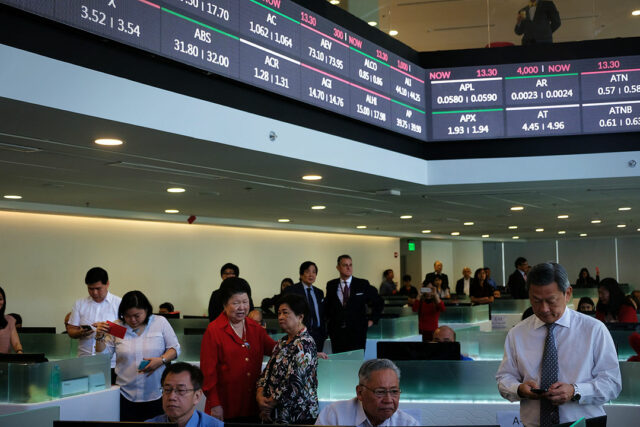As the days grow shorter and the breeze gets cooler, a palpable sense of excitement and warmth begins to spread, heralding the arrival of the Christmas spirit. As the festive lights start to twinkle on houses and streets, they emit a magical ambience that captivates the hearts of both young and old. When I was a child, preparing a Christmas wishlist was a meaningful experience. Our lists were filled with dreams of toys, games, and wonder. More important, they encapsulated our hopes — believing in the enchantment of the season and the likelihood that our wishes would come true.
As we age, our wishlists evolve. Now, as a tax practitioner, one of my wishes is tax certainty. It is a fundamental goal of both tax administrations and taxpayers. We aim to ensure stability and predictability in the ever-evolving tax landscape. The Organization for Economic Cooperation and Development has said that one way to achieve tax certainty is by having effective dispute prevention and resolution processes. These mechanisms play a pivotal role in minimizing uncertainty for both taxpayers and tax administrations.
To be more specific, I am hoping for a more sophisticated transfer pricing (TP) practice in the Philippines. Compliance with TP rules serves as the backbone for the fair distribution of profits among members of multinational enterprises. While the Philippine government’s effort to broaden its taxation net by passing key legislation (e.g., VAT on digital services) is commendable, I aspire for TP to be explored further, just like in other TP-mature jurisdictions. These rules and applications are designed and tested to prevent tax-driven base erosion and profit-shifting (BEPS) mechanisms.
The top three items on my initial list include adopting country-by-country reporting (CbCR), implementing a working mutual agreed-upon procedures (MAP), and crafting the long-awaited advance pricing arrangement (APA) rules. Allow me to provide a simple discussion on how these three actions benefit both taxpayers and tax administrators.
ADOPTION OF CBCR
With its membership in the BEPS Inclusive Framework in November 2023, the Philippines commits to participating in the implementation of the 15 action points of the BEPS package and the Two Pillar Solution. Under BEPS Action 13, all large multinational enterprises are required to prepare a CbCR with aggregate data on the global allocation of income, profit, taxes paid, and economic activity among tax jurisdictions in which they operate. This CbCR is usually used by the tax administrator in assessing risks from TP and BEPS perspectives.
While this will be an additional compliance requirement for taxpayers, it is a starting point and a good indication of their willingness to achieve tax certainty using the tax dispute prevention and resolution mechanisms like the MAP and APA. After all, it might not be too costly for covered MNEs since, as of 2023, they are already filing this CbCR in 102 other jurisdictions.
WORKING MAP
MAP is essential in the proper application and interpretation of tax treaties. Notably, this ensures that taxpayers entitled to the privileges of an existing tax treaty are not subject to taxation by either of the contracting states if it is not in accordance with the terms of the applicable treaty. Revenue Regulations No. 10-2022 contained the Philippine MAP Guidelines, specifying that it could take up to 24 months to process a MAP request. I hope that after more than two years from its issuance, the government and taxpayers have overcome the learning curve for the implementation of the MAP rules.
ADVANCE PRICING ARRANGEMENTS (APA)
While MAP is a tax dispute resolution tool, APA is a prevention mechanism. APAs can be bilateral or multilateral. These are legally binding agreements involving two or more tax authorities and the taxpayers regarding a particular issue in taxation, effective within an agreed timeline. APAs have increasingly proven effective in offering upfront tax clarity to both taxpayers and tax authorities, fostering predictability in the taxation of international transactions and mitigating potential tax conflicts.
These three initiatives will reinforce the TP practice in the country. In addition, they will also help both the government and taxpayers prepare for and embrace the impact of Pillar 1 and Pillar 2. However, the impact of the two-pillar solution on TP must be discussed separately.
With the issuance of Revenue Memorandum Order No. 35-2024, in which the Bureau of Internal Revenue (BIR) outlined its strategic plan for 2024 to 2028, I steadfastly hope that these wishes no longer remain just wishes but are granted soon. The BIR is planning and currently working on institutionalizing a Transfer Pricing Service Division, aiming to acquire a commercial TP database and commence with more thorough TP audits in 2025. The Bureau also envisions that it will review and issue APA rules in 2024.
In conclusion, the gradual implementation of clearer regulations, consistent tax policies, and transparent communication from the government not only alleviates the complexities faced by taxpayers but also fosters a more stable and predictable environment for businesses and individuals alike. This progress underscores the importance of collaborative efforts between tax authorities and taxpayers in achieving a streamlined and efficient tax system. As these wishes continue to come true, they pave the way for enhanced compliance, reduced administrative burdens, and ultimately, a more robust economic framework.
The views or opinions expressed in this article are solely those of the author and do not necessarily represent those of Isla Lipana & Co. The content is for general information purposes only, and should not be used as a substitute for specific advice.
Mac Kerwin Visda is a senior manager at the Tax Services department of Isla Lipana & Co., the Philippine member firm of the PwC network.
mac.kerwin.visda@pwc.com














